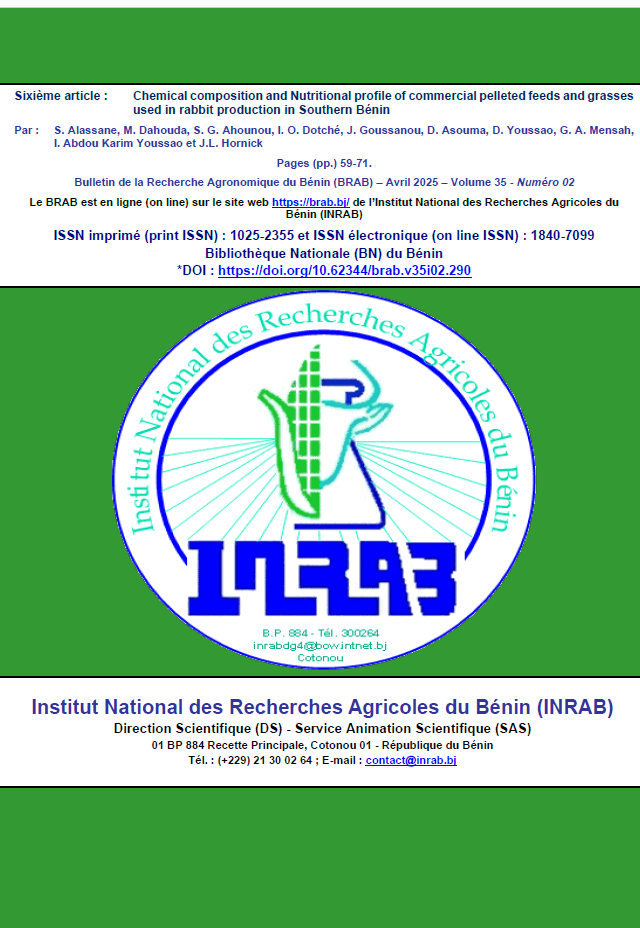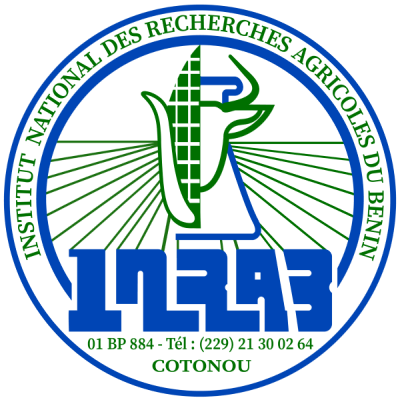Chemical composition and Nutritional profile of commercial pelleted feeds and grasses used in rabbit production in southern Benin
DOI:
https://doi.org/10.62344/brab.v35i02.290Keywords:
Tropical forage, Pelleted feed, Rabbits, Chemical composition, Animal nutrition, SustainabilityAbstract
The study evaluated the chemical composition and nutritional profile of fifteen tropical grasses and five commercial pelleted feeds used to feed rabbits in Southern Benin. Analyses covered dry matter, nitrogenous matter (crude protein), fiber fractions (NDF, ADF, ADL), fat, crude ash, minerals and trace elements. The results showed great variability in the nutritional values of the forages studied. Legumes such as Moringa oleifera (26.2% DM) and Leucaena leucocephala (20.7% DM) stand out for their high protein content, while grasses such as Elaeis guineensis have indigestible high fiber content (ADL: 23.3% DM), which limited their digestibility and use in feed. For pelleted feeds, important variations were observed in nitrogen matter (11.2 to 26.9% DM), fiber (ADF: 10.3 to 24.9% DM) and minerals (Ca: <0.1 to 22.4 mg/kg DM). Hence, these variations can affect zootechnical performance, digestive health and farm profitability. The study highlights the importance of characterizing local forage resources and standardizing feed formulations to guarantee a balanced diet that meets standards and recommendations for rabbit needs (growth, reproduction, maintenance), and to support the sustainability of rabbit production in Benin.

Published
Issue
Section
License
Copyright (c) 2025 Bulletin de la Recherche Agronomique du Bénin

This work is licensed under a Creative Commons Attribution-NoDerivatives 4.0 International License.
Les articles publiés par le Bulletin de la Recherche Agronomique du Bénin sont en libre accès. Ils sont gratuits pour tout le monde, immédiatement téléchargeables dès la publication et distribués sous la licence CC BY-NC-ND (https://creativecommons.org/licenses/by-nc-nd/4.0/).







